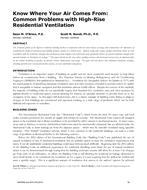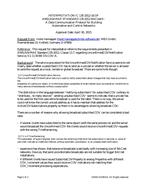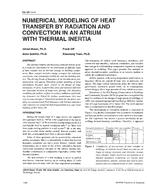Building operations for reduced energy costs and occupant comfort require dynamic control of HVAC systems incorporating short and long response time elements. Actual systems experience large changes in controlled parameters and nonlinear controller action. To gain an understanding of system behaviour, a single-zone environmental chamber is modelled and operated in the heating mode. The energy and mass transfer equations were solved using a fourth-order Runge-Kutta method with variable time step, and the closed-loop temperature response was found to be controllable. Experiments were performed on an environmental chamber to measure the air temperature response while controlling the flow rate. Results show that the response of the nonlinear feedback system is sensitive to changes in parameters such as heat input, and, for a small change in a parameter, the system response may go from a stable to a cyclically stable or unstable condition. The model simulation time trajectories captured these controllability characteristics of the thermal room experiment.
KEYWORDS: energy conservation, thermal comfort, predictive controls, building services, climate chambers, calculating, heating, experiment, measuring, air temperature, flow rate.
Citation: Symposium, ASHRAE Transactions, vol.97, Pt. 1, New York 1991
Product Details
- Published:
- 1991
- Number of Pages:
- 7
- File Size:
- 1 file , 860 KB
- Product Code(s):
- D-18595


